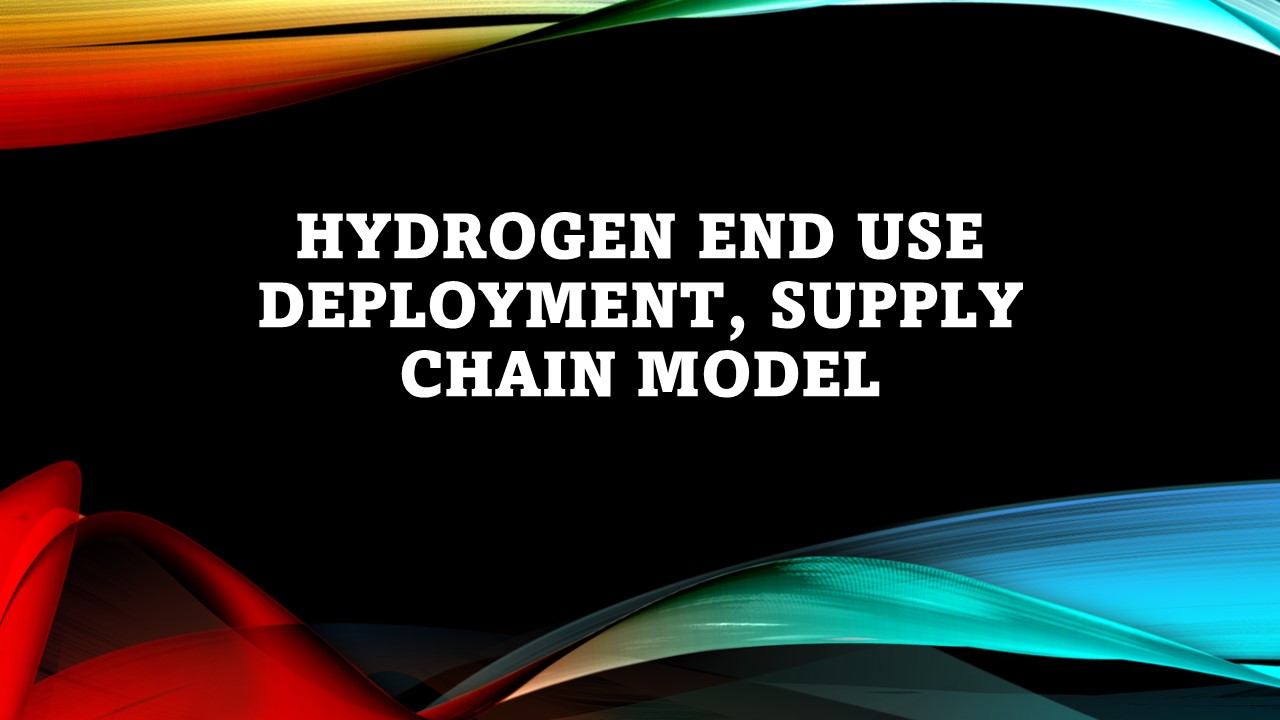Hydrogen End Use Deployment, Supply Chain Model - PowerPoint PPT Presentation
Title:
Hydrogen End Use Deployment, Supply Chain Model
Description:
The deployment of hydrogen in end-use applications is expected to involve a combination of on-site clusters, co-production, and dedicated supply chain models. The specific approach will depend on factors such as the scale of hydrogen demand, industry requirements, infrastructure availability, and regional considerations. – PowerPoint PPT presentation
Number of Views:3
Title: Hydrogen End Use Deployment, Supply Chain Model
1
Hydrogen End Use Deployment, Supply Chain Model
2
(No Transcript)
3
- The deployment of hydrogen in end-use
applications is expected to involve a combination
of on-site clusters, co-production, and dedicated
supply chain models. The specific approach will
depend on factors such as the scale of hydrogen
demand, industry requirements, infrastructure
availability, and regional considerations. - On-site Clusters and Co-production
- On-site Clusters In some cases, industries with
significant hydrogen demand may establish on-site
clusters where hydrogen is produced and consumed
within the same industrial complex. This approach
reduces transportation costs and enables
efficient utilization of waste or byproduct
streams from the industrial processes for
hydrogen production. - Co-production Co-production refers to the
simultaneous production of hydrogen and other
products, such as chemicals or fertilizers, from
the same feedstock. By integrating hydrogen
production with existing industrial processes,
co-production can enhance process efficiency and
reduce costs. - Download- https//www.marketsandmarkets.com/indust
ry-practice/RequestForm.asp
4
- 1. Transportation
- Passenger Vehicles Hydrogen fuel cell vehicles
(FCVs) are already on the market, offering
zero-emission transportation with longer ranges
and faster refueling compared to battery electric
vehicles (BEVs). - Trucks and Buses Hydrogen-powered trucks and
buses are well-suited for heavy-duty and
long-haul applications where battery weight and
charging time can be limiting factors. - Trains and Maritime Vessels Hydrogen can also be
used to power trains and maritime vessels,
reducing emissions and reliance on fossil fuels
in these modes of transportation.
5
- 2. Industry and Manufacturing
- Refineries Hydrogen is essential for various
refining processes, including hydrocracking and
hydrotreating, to produce cleaner fuels. Green
hydrogen can replace traditional hydrogen
production methods to reduce emissions. - Petrochemicals Hydrogen is a critical feedstock
for various petrochemical processes, such as
ammonia and methanol production, and can be
produced sustainably to lower the carbon
footprint. - Steel Production Hydrogen can be used as a
reducing agent in iron ore reduction processes,
potentially replacing carbon-based methods, which
are a significant source of greenhouse gas
emissions. - Cement Manufacturing Hydrogen can be utilized to
replace fossil fuels in high-temperature
processes, reducing carbon emissions in cement
production.
6
- 3. Power Generation
- Distributed Power Generation Hydrogen fuel cells
can be deployed in off-grid or remote areas to
provide clean and reliable electricity. They can
also serve as backup power sources for critical
infrastructure. - Grid Balancing Hydrogen energy storage systems,
such as hydrogen fuel cells or hydrogen-based
turbines, can be used for grid balancing and
energy storage, helping to stabilize intermittent
renewable energy sources.
7
- 4. Buildings and Heating
- Direct Combustion Hydrogen can be burned for
space heating in residential and commercial
buildings, producing heat and water vapor as
byproducts. However, it requires appropriate
infrastructure and safety measures. - Hydrogen Blending In regions with existing
natural gas infrastructure, hydrogen can be
blended with natural gas in varying proportions.
This practice, known as "hydrogen blending," can
reduce carbon emissions from gas heating systems
while utilizing the existing distribution
network. - READ MORE- https//www.marketsandmarkets.com/indus
try-practice/hydrogen/enduse-deployment-supply-cha
in-model































